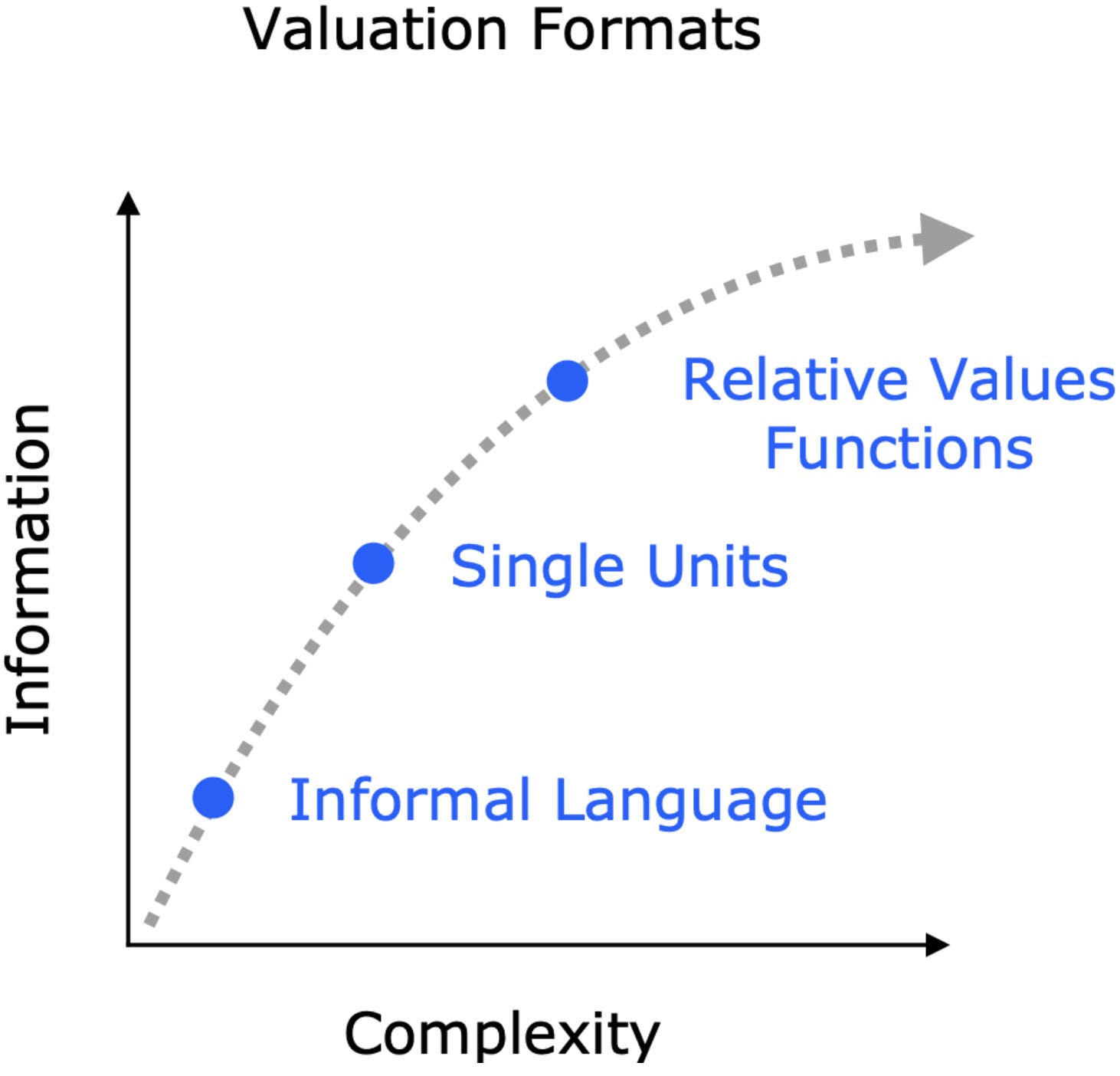Relative Value Functions: A Flexible New Format for Value Estimation
We just published a blog post outlining the details of relative value functions. This was touched on in the presentation I sent out yesterday.
The post has several code sections and tables, so I won’t attempt to copy that over here. Instead, I’ve attached the summary. I suggest reading the full piece on the EA Forum.
Summary
Quantifying value in a meaningful way is one of the most important yet challenging tasks for improving decision-making. Traditional approaches rely on standardized value units, but these falter when options differ widely or lack an obvious shared metric. We propose an alternative called relative value functions that uses programming functions to value relationships rather than absolute quantities. This method captures detailed information about correlations and uncertainties that standardized value units miss. More specifically, we put forward value ratio formats of univariate and multivariate forms.
Relative value functions ultimately shine where single value units struggle: valuing diverse items in situations with high uncertainty. Their flexibility and elegance suit them well to collective estimation and forecasting. This makes them particularly well-suited to ambitious, large-scale valuation, like estimating large utility functions.
While promising, relative value functions also pose challenges. They require specialized knowledge to develop and understand, and will require new forms of software infrastructure. Visualization techniques are needed to make their insights accessible, and training resources must be created to build modeling expertise.
Writing programmatic relative value functions can be much easier than one might expect, given the right tools. We show some examples using Squiggle, a programming language for estimation.
We at QURI are currently building software to make relative value estimation usable, and we expect to share some of this shortly. We of course also very much encourage others to try other setups as well.
Ultimately, if we aim to eventually generate estimates of things like:
- The total value of all effective altruist projects;
- The value of 100,000 potential personal and organizational interventions; or
- The value of each political bill under consideration in the United States;
then the use of relative value assessments may be crucial.


